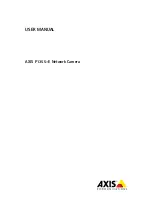
22
4.2. "Hayes" Protocol Commands
4.2.1. General
These commands configure the Modem assigning different values in the registers (S200
and next). They also enable the user to know the state of the registers and the version
of the modem software. These frames can only be sent if the CTS signal is active except
when in Acquisition Mode.
These commands support the 'Hayes' protocol used by the voice Modems. When a
When a
When a
When a
command is sent, it
command is sent, it
command is sent, it
command is sent, it always has to be preceded
always has to be preceded
always has to be preceded
always has to be preceded by the 'AT' characters (ATtention).
by the 'AT' characters (ATtention).
by the 'AT' characters (ATtention).
by the 'AT' characters (ATtention).
When a command has been sent, it
When a command has been sent, it
When a command has been sent, it
When a command has been sent, it always has to be followed
always has to be followed
always has to be followed
always has to be followed by the <CR> character
by the <CR> character
by the <CR> character
by the <CR> character
(carriage return, Hexadecimal 0x13 code).
(carriage return, Hexadecimal 0x13 code).
(carriage return, Hexadecimal 0x13 code).
(carriage return, Hexadecimal 0x13 code).
NOTE:
NOTE:
NOTE:
NOTE: The time slot between two characters of the command has to be inferior to
Time-Out (S214). As a result, the commands have to be sent by block:
A T Command Additive
command ... <CR>
The sole exception
The sole exception
The sole exception
The sole exception is the passing command from the Operation Mode in progress
is the passing command from the Operation Mode in progress
is the passing command from the Operation Mode in progress
is the passing command from the Operation Mode in progress to
to
to
to
the Hayes Mode: In this case,
the Hayes Mode: In this case,
the Hayes Mode: In this case,
the Hayes Mode: In this case, the escape code ('+++')
the escape code ('+++')
the escape code ('+++')
the escape code ('+++') has to be followed and
has to be followed and
has to be followed and
has to be followed and
preceded by a silence period that lasts at least the same as time out. In this case only,
preceded by a silence period that lasts at least the same as time out. In this case only,
preceded by a silence period that lasts at least the same as time out. In this case only,
preceded by a silence period that lasts at least the same as time out. In this case only,
the command will neither be preceded by AT, nor followed by <CR>
the command will neither be preceded by AT, nor followed by <CR>
the command will neither be preceded by AT, nor followed by <CR>
the command will neither be preceded by AT, nor followed by <CR>
These commands are described in detail in the next chapter.
















































